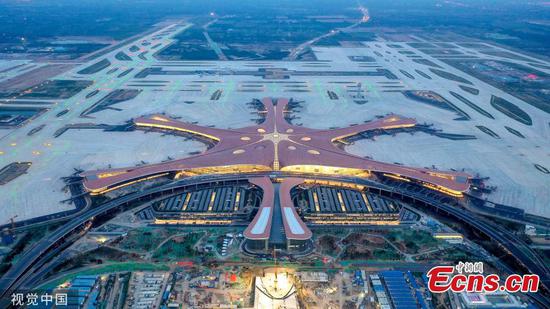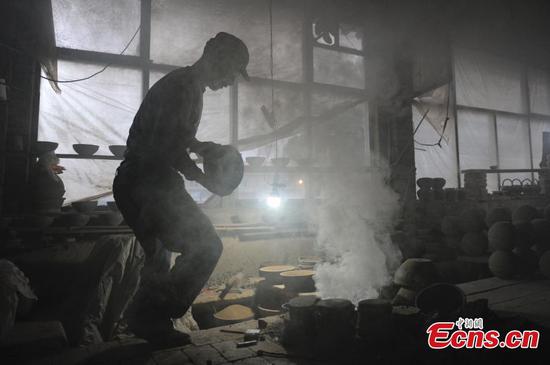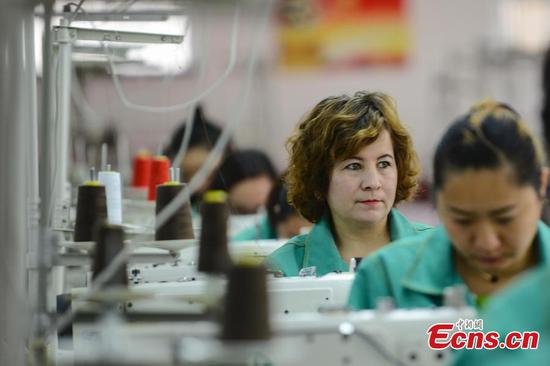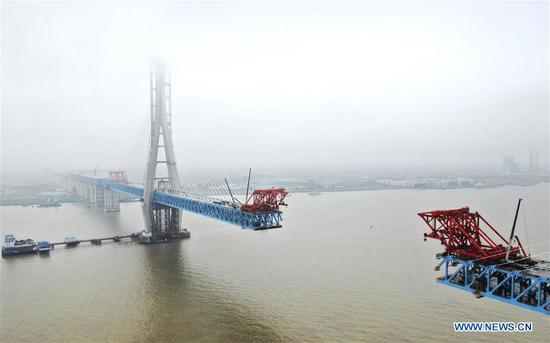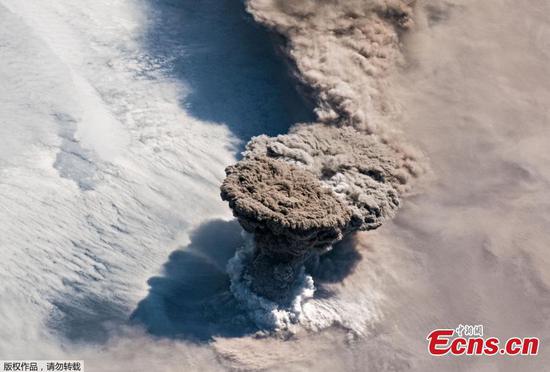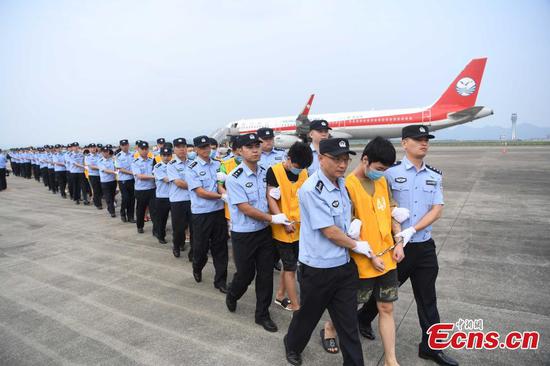Southeast China is in the vanguard of advanced safety measures
The magnitude 6 earthquake that hit Yibin in the southwestern province of Sichuan on June 17 brought back distressing memories for Fan Chunmei, a businesswoman in Fujian province, as she recalled an earthquake that struck her hometown of Nantou, Taiwan, in 1999.
"Five days after the earthquake, I was on my way back to Nantou. As I drove along a mountain road, I saw many empty coffins in an open space and there was a big freezer on one side. Employees of the local funeral parlor told me that there were more than 2,000 unclaimed bodies in that freezer," she said.
"As a Taiwan native, I am aware of the impact of earthquakes. Therefore, when the Fujian Earthquake Agency came to me and offered an earthquake early warning terminal, I did not hesitate to install it in my factory, even though I was not sure how it worked."
The terminal is an important part of Fujian's earthquake early warning system, and it is also a part of the National Seismic Intensity Rapid Reporting and Early Warning Project, a nationwide program approved by the central authorities in 2017.
About 60 seconds after the earthquake struck Yibin, it hit Chengdu, capital of Sichuan, but local residents had already been warned by the terminal, which resembles a self-service machine at a fast-food restaurant. It displays a range of information on its screen, including earthquake warnings, meteorological information and public notices that can save many lives.
The alarm is triggered within seconds of an earthquake hitting. Accompanied by a piercing siren, a window comes up on the screen giving a second-by-second countdown to the ground starting to shake and indicating how intense the aftershock will be.
Despite its success, the Fujian Earthquake Agency, aka the FJEA, stresses that the terminal only provides early warnings, it cannot predict earthquakes.
Uneven Knowledge
Our knowledge of these natural phenomena is uneven. For example, meteorological experts can use satellites to determine the direction of cloud movements and predict landfall for typhoons, but the deepest shaft bored into the surface of the Earth is 12 kilometers, just 0.18 percent of the distance to the core.
However, that does not mean experts cannot learn about the Earth's internal structure. In the same way that medical imaging allows us to see internal organs without cutting through the skin, by detecting the frequency of vibrations, seismologists can describe the structure of the crust, where tectonic plate movements produce earthquakes.
This movement generates two waves; the primary wave travels quickly, at about 6 kilometers a second, but has low destructive power, while the relatively slow-spreading secondary wave, at about 3 km per second, is the main force that triggers earthquakes. Because it travels at about twice the speed of the secondary wave, the primary wave is the main source of the early warning system.
The terminal provides the estimated time and intensity of an imminent earthquake several seconds before the destructive secondary wave arrives. Those precious seconds are enough to allow emergency measures to be taken by members of the public, local institutions and vital infrastructure and utilities, such as chemical and nuclear power plants.
Fan's factory is the first private facility in Fujian to install the terminal. Last year, the province published plans to install terminals in 18,400 schools and communities, as one way of providing early warnings.
Support program
After the devastating 2008 earthquake in Wenchuan, Sichuan, which killed nearly 70,000 people, China began paying more attention to early warning technology for earthquakes. In August of the same year, the China Earthquake Administration submitted a national science and technology support program for early warning measures.
Since then, the FJEA has also played an important role in China's early warning program.
The program, whose lead expert is a member of the FJEA, studies the key practical technology of seismic intensity rapid reporting, and earthquake early warnings are produced with strong support from the agency.
"Southwest China has the highest frequency of earthquakes, but Fujian (on the southeast coast) is also at high potential risk from such disasters. There are many epicenters in the Taiwan Straits that threaten us, and Fujian has suffered many earthquakes throughout history," said Wang Qingping, chief designer at the FJEA's Emergency Command and Publicity Center.
Seismic sensors in monitoring stations detect the waves that emerge from an earthquake before the temblor begins. These cylindrical bucket-like devices are so sensitive that they can even distinguish different types of aircraft by the frequency of the vibrations they produce. To capture seismic data promptly and accurately, the stations need to be densely located in different areas.
"Fujian has the most advanced and widely distributed monitoring stations in China. By 2020, we will have more than 1,300 different types of monitoring station across the province, which means one will be sited every 10 kilometers," Wang said.
"Today, mobile phones are the main source of instant information for many people. In 2010, we began developing earthquake early warning software, and now we have an independently developed smartphone app. From the moment we receive the seismic data, it takes less than a second to send warning notifications to phone users."
On Nov 26, a magnitude 6.2 earthquake struck in the south of the Taiwan Straits. The FJEA's seismic publishing platform sent an early warning to 2,380 mobile phone users and 3,750 terminals just 8.6 seconds after the earthquake was triggered. Schools in some coastal areas quickly evacuated their students without stampedes or casualties.
"We have a class related to disaster prevention every Friday, and an evacuation drill every month," said Wang Yichun, a student at Xinqiao Middle School in Jinjiang, Fujian.
"We also learn how to pitch a tent during our physical education classes. The exercises are fun, but more importantly, we get to know what to do after receiving an earthquake warning on the terminal or our phones."


















